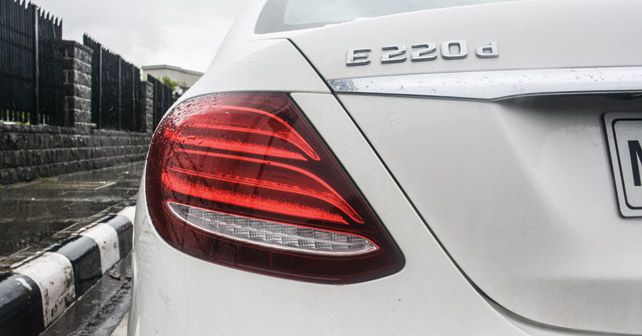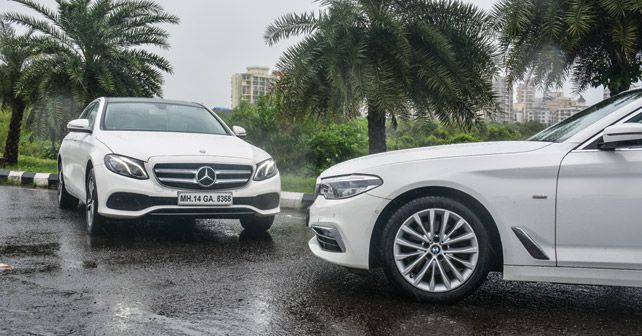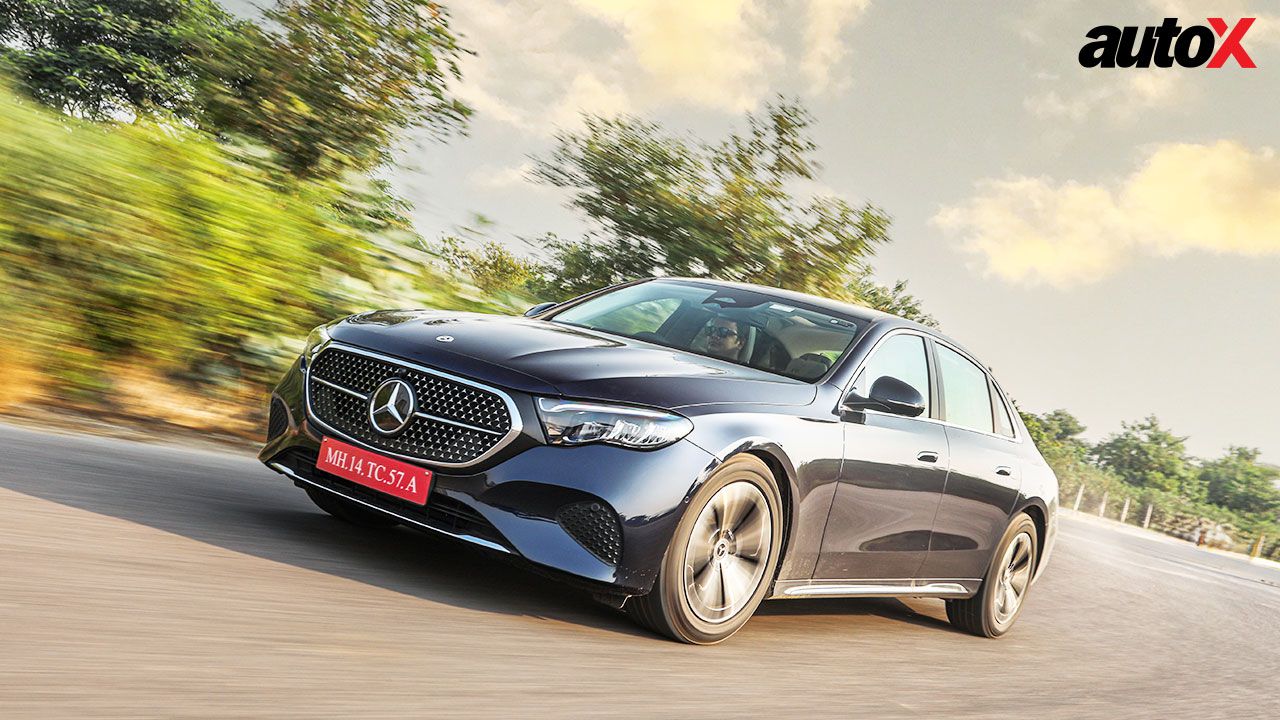Mercedes-Benz E-Class vs BMW 5 Series: Comparison
The Mercedes-Benz E-Class and the BMW 5-Series have always been the arch-rivals in the segment. But now, these opulent saloons are updated with added charisma. So, which one then? Read on.

Since time immemorial, the battle between the BMW 5 Series and the Mercedes-Benz E-Class has been one of the heart and the mind. Have things changed with these two new-generation models?
Remember as a kid, when your parents gave you some pocket money? With that money, you had the option of either treating yourself to ice cream or chocolate. Now, that’s a quandary no kid can come ever out of easily. Magnify that dilemma exponentially, and what you have is a battle that continues to consume prospective customers who are choosing between the BMW 5 Series and the Mercedes-Benz E-Class.
Earlier this year, Mercedes-Benz pulled a rabbit out of a hat by launching the E-Class in its long-wheelbase form for the first time in India. It took luxury in its segment to a new level with the amount of space and comfort it offers. BMW followed this up with the introduction of the all-new 5 Series in June. While a lot of petrolheads were complaining that the previous-gen 5 had going soft and drifted away from its ‘ultimate driving machine’ DNA, this new one takes it back to its roots. With both these manufacturers putting their best foot forward, this duel is going to be as intense as the Battle of Thermopylae!
Inside Out
The first thing you notice when you look at both these cars is just how similar they look to their larger siblings – the respective brand flagships. Personally, we just love the way the new 5 Series looks. The wide kidney grille, the stretched out headlights and the sharp creases, all give it a much more dynamic persona. And then there are the finer elements, such as the automatically opening air vents in the grille, air scoops just behind the front wheel arch, and the chiselled rear section that add to the overall appeal. Mercedes-Benz, on the other hand, has taken a voluminous approach to the E-Class’ design. With a relatively curvilinear body, the E tends to look a little plump – especially when parked next to the 5. And it becomes even more evident when you see it in its full 5-metre profile. It’s 127mm longer than its rival, and its wheelbase is longer by an impressive 104mm. Obviously, this has resulted in a lot more space in the cabin of the Mercedes. But the Stuttgart-based carmaker’s advantage doesn’t end there. The union of the reclining rear seat and the cushy pillow on the head restraint make it easily the most comfortable car in its category.

As far as the rest of the interior goes, both cars have a distinct identity. Just like the exterior, the dashboard of the 5 Series too looks very similar to the 7 Series. The tan and beige colour combination, with wood and metallic inserts, gives it a sporty appeal. The centre console has the touchscreen infotainment system and the air-con controls angled towards the driver. From the front seats, the cabin feels airy and spacious thanks to the large glasshouse and the sunroof. The E-Class’ interior, on the other hand, has elegance written all over it. Apart from actually having more space, the sense of space is further enhanced thanks to the white upholstery and panoramic sunroof. Draped in black and white, the dashboard has an un-veneered wood finish in the centre with soft-touch materials at the top and the bottom. Taking centre stage is a large 12.3-inch display, which is strangely not a touchscreen unit. While the piano black finish on the centre console looks good, it looks as though it’ll get scratched easily and be difficult to maintain. Both these cars make do with a space-saving spare tyre. But, while the BMW has made the effort to pack it neatly into the boot, Mercedes has just tied it down with a few straps in the luggage compartment – which eats into the boot space.
In terms of features, the 5 is easily better equipped than the E. First, let’s get the common features out of the way. Both cars get LED headlights and taillights, rain-sensing wipers, electrically adjustable front seats with memory function, keyless go, button start, and more. The Mercedes also comes with an electrically adjustable rear seat with memory function. To give rear passengers added convenience, it also gets electric sun-blinds. And, although the BMW has a fixed rear seat, it gets a longer equipment list – including a 360-degree camera, remote parking, electrically adjustable steering, wireless phone charger, adaptive suspension, and more.
From behind the wheel
Both cars come with a 2.0-litre engine and make roughly the same amount of power and torque. The BMW makes its 188bhp and 400Nm at slightly higher engine speeds than the Mercedes, due to which the former feels a bit slow to take off. In comparison, the E-Class is a bit more rev-happy but that doesn’t compensate for the additional 131kgs that it carries around – making it marginally slower to reach the 100km/h mark. However, the additional 4bhp that the Mercedes makes allows it to attain a claimed top speed of 240km/h, which is a tad higher than the BMW. Kick-down on the Mercedes is also better, which can be credited to the 9-speed transmission that has more ratios to play with. However, BMW’s trusted ZF-sourced 8-speed transmission does feel more responsive. Whether you drive it hard or in a relaxed manner, gearshifts are quick and smooth. Refinement levels have improved on both machines, but noise insulation inside the cabin of the 5 is noticeably better.

I mentioned earlier that the previous-gen 5 had started to focus more on comfort rather than outright handling – something that has changed with this new model. Its evenly balanced 1,679kg weight, adaptive suspension and a relatively communicative steering gives it better driveability on winding roads. A wider rear track and larger 18-inch wheels also hint at the fact that the BMW is the one to have for spirited driving. The BMW’s body-roll is limited, and the suspension is setup perfectly to restrict lateral movement – which plays a crucial role in offering more confidence while cornering. Throughout this article, it’s been clear that the E-Class LWB has been built around the rear passenger. Keeping this in mind, you’d expect the Mercedes to ride better than the 5 – but we were really surprised to find that it was quite the opposite. At slow speeds, the Mercedes absorbs the potholes and rough roads well to offer a plush ride quality, but pick up the pace and it starts to wallow around a little too much. Thanks to the adaptive suspension, the BMW has a much more predictable ride, which works better in the overall scheme of things. Meanwhile, the brakes on both the cars have enough bite and provide good stopping power.
Catch-22
Both cars are evenly matched in more or less every aspect. The Mercedes’ business-like design and the sophisticated interior may appeal to many. It’s a lot more refined than its predecessor, and the improved in-gear acceleration results in better city driveability. And you really can’t do better than the E-Class as far as rear-seat comfort is concerned. So, the result of this test is quite predictable really. If you’ll be chauffeured around more than you’ll find yourself in the driver’s seat, then the E-Class is clearly the car for you. And while the 5 Series might not be the car to be driven around in, it inches ahead in more aspects than one. It has a longer list of features, better handling and rides surprisingly as well, if not better, than the E. The BMW 520d, then, is a classic example of how the small things make a big difference. For my money, since I wouldn’t let a chauffeur anywhere near the cockpit, the 5 would be my pick.

Read more:
Engine: 1,950cc / 4-Cylinder / 16 Valves / Turbocharged
Fuel: Diesel
Transmission: 9-Speed Automatic / Rear-Wheel Drive
Power: 192bhp @ 3,800rpm
Torque: 400Nm @ 1,600rpm-2,800rpm
Price: Rs.57.46 lakh (Ex-showroom)
X-factor: With a back seat that’s fit for a king, it makes you wonder why anyone would need to spring for an S-Class.
Pros
• Rear seat comfort
Cons
• Limited Boot space








Write your Comment on